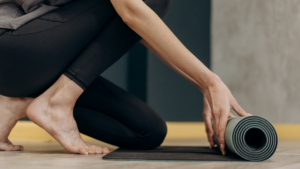Exploring the Science Behind Rest Days, the Benefits they Bring, and How to Maximize them for Enhanced Fitness and Well-Being
In a society where more is often considered better, rest days are frequently overlooked and undervalued, seen as a hindrance to progress rather than a necessary component of a healthy and balanced lifestyle. However, recent studies have shown that rest days are not just important, but vital, serving as a crucial element in the quest for a fitter, stronger, and healthier body.
The Science Behind Recovery
Research has shown that when one engages in physical activity such as strength training, high-intensity exercises such as HIIT or even running, they cause microscopic tears in the muscle fibers. While this may sound alarming, rest days provide an opportunity for these tears to repair, making the muscles stronger and larger. It is during rest and recovery that muscles grow, and without this vital process, muscles cannot fully recover, increasing the risk of overtraining, weaker muscles, and poor performance.
Performance Enhancing Benefits
Adequate rest is a crucial aspect for athletes and sports enthusiasts for improving their performance. Rest days allow the body to recover from the physical and mental strain of exercise, which enhances focus and coordination during subsequent sessions. Additionally, rest days allow the body to replenish its energy stores, specifically replenishing glycogen stored in muscles, critical for endurance and overall performance during future activities.
Preventing Burnout and Overtraining Syndrome
Overtraining syndrome is a legitimate problem affecting fitness enthusiasts and athletes alike who push themselves too hard without enough rest. Symptoms of overtraining include exhaustion, mental changes, poor performance, and increased susceptibility to illness. Rest days help with recovery, but also prevent physical and psychological burnout that often comes with overtraining. Incorporating rest days into a training program helps maintain one’s drive and enjoyment of physical activity.
Promoting Long-Term Health and Well-Being
While rest plays a vital role in the short-term recovery of muscles, it is also essential for long-term health and avoiding injuries. Regular and continuous exercise without enough rest can lead to strain on the heart, joints, and other tissues resulting in an increased likelihood of injuries that could keep individuals out of exercise for weeks or even months. Frequent rest days allow for the body to rebuild and strengthen itself, decreasing the likelihood of exercise-related ailments.
The Mental Health Benefits of Rest Day
Physical exercise places stress on the body, and like any tension, the body takes time to recuperate. Ongoing exercise can cause mental exhaustion, diminished motivation, anxiety, and even depression. Rest days provide a mental vacation from an exercise routine, helping to maintain a good balance of physical activity and mental wellness, raising overall well-being.
Optimizing Rest Days
Rest days don’t always require complete inactivity. Active recovery during rest days, including low-intensity exercises such as yoga, walking, and gentle stretching, helps increase flexibility and circulation without putting too much stress on the body. Rest days also provide an excellent opportunity to focus on other aspects of well-being, such as hydration, sleep, and diet, all of which comprises a full fitness program.
Conclusion
Rest days serve as a crucial component of any fitness regimen, providing benefits that include preventing burnout, enhancing performance, and promoting long-term health. By scheduling rest days into a workout program, one could reap the benefits of physical exercise, while keeping the body and mind healthy and prepared for future challenges. The take-home message? Relaxation isn’t just a sign of weakness, it’s an essential component of strength.
References & source credits : ba2ro_fitness
Also Read: Unlocking Your Path to Healing: Exploring the Different Types of Therapy






